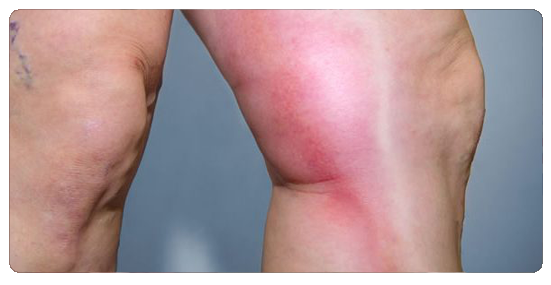Knee Replacement Risk And Complications
As with all major surgical procedures, complications can occur. Some of the most common complications following knee replacement are:
- Deep venous thrombosis (DVT)
- Infection
- Stiffness
Deep Venous Thrombosis (DVT)
This term refers to the formation of blood clots (called thrombosis) in the large veins, usually of the legs or pelvis. It can occur after any operation, but is more likely to occur following surgery on the hip, pelvis, or knee. It results from the slowing of the blood flow in the leg during and after surgery. DVT may cause the leg to:
- Swell
- Become warm to the touch
- Become painful
Nice to Know
Some of the commonly used preventative measures include:
- Moving the leg as soon as possible after surgery
- Using pressure stockings to keep the blood in the legs moving. They are worn immediately after surgery and continued for several weeks.
- Prescribing medications that thin the blood and prevent blood clots from forming. They may be started before surgery or immediately after and continued for a period of time following surgery.
- Using a Continuous Passive Motion Machine that moves the knee throughout it's range of motion after surgery. This not only helps regain motion but also aids in moving blood throughout the veins.
- For further information about deep vein thrombosis, go to Deep Vein Thrombosis.

Infection
The chance of getting an infection following artificial knee replacement is less than one percent. Some infections may show up very early, even before discharge from the hospital. Others may not become apparent for months, or even years, after the operation. All patients receive antiobiotics for at least 24 hours after surgery to minimize the risk of infection.
Infection can spread into the artificial joint from other infected areas of the body.
Therefore, your surgeon may want to make sure that you take antibiotics if ever you have dental work, or undergo a surgical procedure on your bladder and colon to reduce the risk of spreading germs to the knee replacement joint.
To minimize the risk of infection, most surgeons will defer doing total knee replacement if there is an open wound anywhere on the body.
Stiffness
To be able to use the knee effectively to rise from a chair, the replaced joint must bend at least to 90 degrees. Most surgeons desire range of motion greater than 110 degrees. In some cases, the ability to bend the knee does not return to normal after an artificial knee replacement. Because of this many surgeons utilize.
- Physical therapy beginning immediately after the surgery to help regain range of motion.
- Continuous passive motion (CPM): This involves the use of a specialized machine immediately after surgery to increase the range of motion of the operated knee following artificial knee replacement.
Occasionally, an excessive scarring after surgery can lead to an increasingly stiff knee. If this occurs, the surgeon may recommend taking the individual back to the operating room after the surgery and simply manipulate ( i.e. bend) the knee under anesthesia to regain motion. This allows the surgeon to breakup and stretch the scar tissue to increase the motion in the knee without injuring the joint.
The most important factor in preventing stiffness is keeping the knee moving in the days and weeks following surgery and actively participating in the physical therapy program.